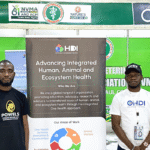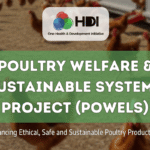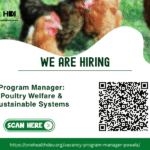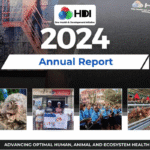Addressing Antimicrobial Resistance in the Poultry Industry: A Case Study of the Nawalpur District in Nepal
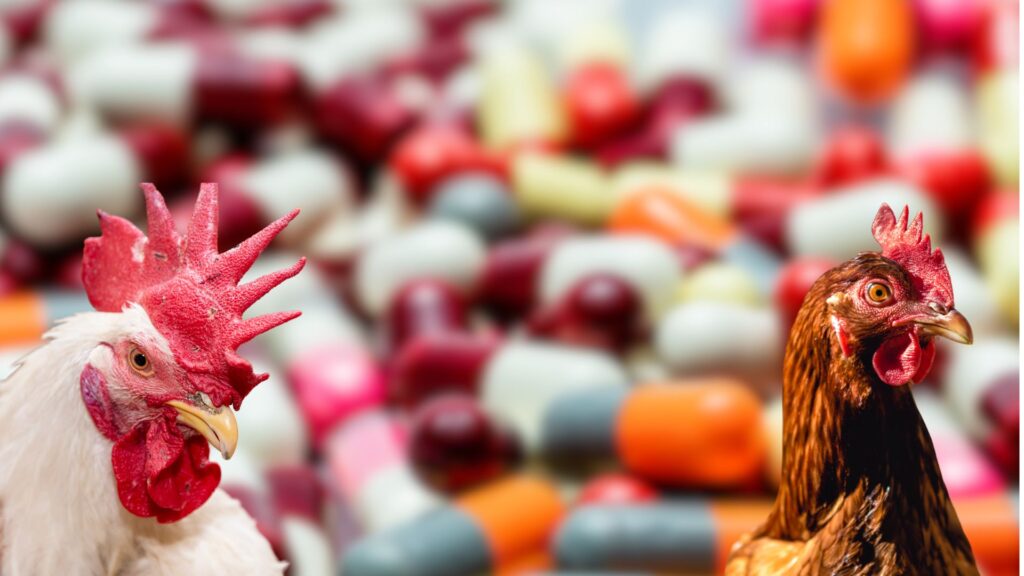
Global and National Action Plans (NAPs) to combat antimicrobial resistance (AMR) have been initiated and coordinated through the tripartite alliance of the World Health Organization (WHO), the Food and Agricultural Organization (FAO) and the World Organization for Animal Health (WOAH, formerly OIE). All countries are now expected to implement NAPs on AMR through multisectoral collaboration to enable comprehensive surveillance, monitoring, and policy implementation across human, animal, and environmental domains (Jinks et al., 2016). In Nawalpur District, Nepal, poultry farming plays a vital role in food security and economic stability. However, the increasing use of antimicrobials in poultry has raised concerns about its contribution to the emergence and spread of AMR, a global health crisis that threatens both animal and human health.
The Poultry Industry in Nawalpur
Poultry is one of the fastest-growing meats produced in the world (Elwinger et al., 2016). Like other regions in Nepal, Nawalpur District has seen a significant rise in poultry farming. Small-scale and commercial poultry production have become major sources of income for many households, contributing to local food security and livelihoods. However, intensive poultry farming frequently involves the use of antibiotics, not only to cure diseases but also to promote growth and prevent infections in overcrowded and congested conditions.
Antimicrobial Resistance in Poultry
AMR remains a significant danger to human and animal health, limiting the ability to treat bacterial infections and increasing the risk of morbidity and mortality caused by resistant bacteria. Ensuring the effectiveness of antimicrobials in treating bacterial infections remains a major issue for both veterinary and human medicine (Tang et al., 2017). AMR occurs when bacteria and other microorganisms evolve to resist the effects of antibiotics. In Nawalpur and across Nepal, common practices like using sub-therapeutic doses or unsupervised antibiotics occur due to a lack of awareness and regulation.
In poultry farming, antibiotics are frequently used to prevent diseases like colibacillosis, mycoplasmosis, and salmonellosis. While this may reduce immediate disease outbreaks, excessive and incorrect antibiotic usage contributes to the development of bacterial resistance. These resistant bacteria can then spread to humans through direct contact with poultry, consumption of undercooked meat, or contamination of the environment.
Human Health Implications of AMR
Understanding the primary transmission routes of zoonotic bacterial resistance is critical for veterinary medicine and public health. Resistant bacteria from poultry birds with the ability to colonise human microbiota is not a new concept (Levy et al., 1976). Numerous studies have shown that commercial poultry workers face a significant occupational exposure risk to zoonoses (Hudson et al., 2017). In Nawalpur, where poultry is an essential part of the diet, the transmission of resistant bacteria to humans is a major concern. People who eat contaminated poultry may become carriers. Intensive poultry farming has been associated with AMR transmission between domestic and wild animal species (Pornsukarom et al., 2018). Moreover, AMR extends beyond the boundaries of animal farming. Poultry farm waste, like manure containing antibiotics and resistant bacteria, often contaminates local water or soil, spreading resistance genes in the environment.
The Role of One Health in Tackling AMR in Poultry Farming
One health is an integrated, unifying approach that aims to sustainably balance and optimise the health of people, animals and the environment (King et al., 2008). Addressing AMR arising from the poultry industry requires consolidated and holistic efforts. Here are some strategies that can help mitigate the development and spread of AMR in poultry.
- Improving Antibiotic Stewardship: Education and awareness campaigns for poultry farmers are crucial for improving antibiotic use. Farmers need to understand the importance of using antibiotics only when prescribed by a registered veterinarian, and in appropriate dosages.
- Strengthening Veterinary Services: Veterinarians play a key role in diagnosing diseases and advising farmers on maintaining flock health without overusing antibiotics. Improved biosecurity measures like vaccination, sanitation, and disease surveillance, can reduce outbreaks and reliance on antibiotics.
- Surveillance and Monitoring of AMR: Establishing strong surveillance systems to track antibiotic use and resistant bacteria in poultry farms is essential.
- Environmental Monitoring and Waste Management: Poultry waste, particularly manure, should be managed to avoid environmental contamination. Waste treatment facilities and proper disposal methods should be implemented to reduce the spread of resistance genes in soil and water.
To conclude, the poultry industry is an important economic driver but also a potential hotspot for antimicrobial resistance. Addressing AMR through a One Health approach requires collaboration between veterinarians, farmers, health professionals, and policymakers. By improving antibiotic stewardship, enhancing biosecurity, and monitoring resistance patterns, Nawalpur can become a model for rural regions in Nepal balancing food security and public health. The fight against AMR is a global challenge, and local actions, guided by the One Health principles, are key to winning this battle.
References
Elwinger, K., Fisher, C., Jeroch, H., Sauveur, B., Tiller, H., & Whitehead, C. C. (2016). A brief history of poultry nutrition over the last hundred years. World’s Poultry Science Journal, 72(4), 701–720.
Hudson, J. A., Frewer, L. J., Jones, G., Brereton, P. A., Whittingham, M. J., & Stewart, G. (2017). The agri-food chain and antimicrobial resistance: A review. Trends in Food Science & Technology, 69, 131–147.
Jinks, T., Lee, N., Sharland, M., Rex, J., Gertler, N., Diver, M., Jones, I., Jones, K., Mathewson, S., & Chiara, F. (2016). A time for action: antimicrobial resistance needs global response. Bulletin of the World Health Organization, 94(8), 558.
King, L. J., Anderson, L. R., Blackmore, C. G., Blackwell, M. J., Lautner, E. A., Marcus, L. C., Meyer, T. E., Monath, T. P., Nave, J. E., & Ohle, J. (2008). Executive summary of the AVMA one health initiative task force report. Journal of the American Veterinary Medical Association, 233(2), 259–261.
Levy, S. B., Fitzgerald, G. B., & Macone, A. B. (1976). Spread of antibiotic-resistant plasmids from chicken to chicken and from chicken to man. Nature, 260(5546), 40–42.
Pornsukarom, S., Van Vliet, A. H. M., & Thakur, S. (2018). Whole genome sequencing analysis of multiple Salmonella serovars provides insights into phylogenetic relatedness, antimicrobial resistance, and virulence markers across humans, food animals and agriculture environmental sources. BMC Genomics, 19, 1–14.
Tang, K. L., Caffrey, N. P., Nóbrega, D. B., Cork, S. C., Ronksley, P. E., Barkema, H. W., Polachek, A. J., Ganshorn, H., Sharma, N., & Kellner, J. D. (2017). Restricting the use of antibiotics in food-producing animals and its associations with antibiotic resistance in food-producing animals and human beings: a systematic review and meta-analysis. The Lancet Planetary Health, 1(8), e316–e327.
Author
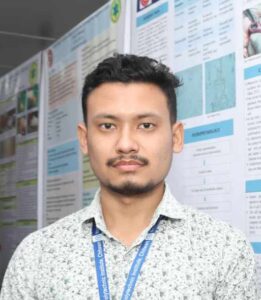
Dr. Roshik Shrestha
Dr. Roshik Shrestha, a veterinarian from Nepal, is deeply passionate about One Health and epidemiology. He earned his bachelor's degree in Veterinary Science and Animal Husbandry from Nepal Polytechnic Institute, affiliated with Purbanchal University. As a former research assistant at Lumbini Environmental Services, Dr. Shrestha has cultivated a strong interest in integrating animal health, environmental sustainability, and human well-being. With hands-on experience in dairy farming, poultry, meat inspection, and data-driven animal health practices, Dr. Shrestha is committed to advancing global health solutions through interdisciplinary approaches.



